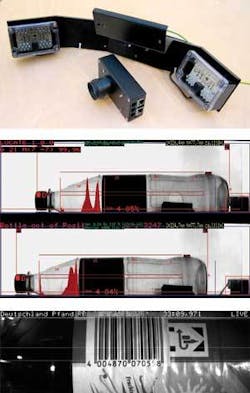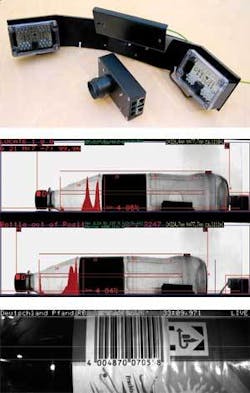Reverse vending machines help Europeans recycle
Andrew Wilson, Editor, [email protected]
Europeans, it seems, are very aware of the need to conserve raw materials. So, a number of companies, including Trautwein SB Technik (Ostfildern, Germany; www.trautwein-sb.de), manufacture reverse vending machines (RVMs) that can identify specific products such as bottles and cans placed within them, reading barcodes and security marks placed on the labels of each bottle or can and then returning a monetary deposit to the consumer.
“Although reading barcodes on each bottle is not new,” says Christoph Baumer, director of engineering at Insensiv (Bielefeld, Germany; www.insensiv.de), “the latest codes specified by the DPG Deutsche Pfandsystem (Berlin, Germany; www.dpg-pfandsystem.de) include a security mark on each one-way bottle or can and the parameters needed to decode it. These security codes indicate whether a specific bottle has been manufactured for the German market and verify whether a refund should be made.”
According to Baumer, such coding will be required on every one-way deposit label sold in Germany from May 2007. Founded last year, Insensiv is set to address the problem of identifying both barcode marks and security codes on these products with a smart camera system that can be embedded in RVMs.
“Lighting plays a critical role in illuminating each bottle or can as it is rotated within the RVM,” says Baumer. “Since the DPG code is a security mark, it can be illuminated in both visible and infrared (IR) light. While the security code can be detected in the visible spectrum, it disappears when subjected to special IR light. Because of this, a novel lighting design was required to illuminate the bottle or can under visible and IR lighting conditions. Insensiv developed a custom lighting design that uses different LEDs mounted in a housing to illuminate each bottle or can as it is placed in the RVM (see figure).
“Since the DPG specifies the way in which a DPG code must be read in both visible and IR modes,” says Baumer, “the two lighting scenarios are switched by the imaging system to illuminate the package at the best.” The images are then captured using a CMOS imaging camera developed specifically for Insensiv by Smart Network Devices (SND; Jülich, Germany; www.smartnd.com) that uses a CMOS image sensor from Micron Technology (Boise, ID, USA; www.micron.com).
“Featuring two I/O lines to control the LED lighting system and both a serial and Ethernet interface, the camera’s on-board processor,” says Baumer, “allows images to be processed as they are shot, off-loading these tasks from the host PC.” As well as reading the barcode and security code, the system can detect different types of bottles placed in the machine. This is done by locating specific regions of interest of the shape of the bottle and measuring parameters such as white-to-gray transition points within each image.
Once these are detected, features such as the length of the bottle, cap height, label size, and profile of the bottle can be determined. After these features are detected, data describing individual bottles are transmitted to the host PC using the camera’s Ethernet interface. This can then be correlated with the barcode information and compared with stored data in the PCs database. In this way, the system can automatically track the different types of bottles the consumer has placed within the RVM.
Insensiv was established in 2005 out of the Ingenieurbüro für Bildverarbeitung Christian Gieselmann (Bielefeld, Germany; www.gipro-bv.de), which was founded in 1994. Its main focus is currently the development of customer-specific image-recognition systems, particularly embedded systems for vending-machines, and for the agriculture and pharmaceutical industries in Europe.

